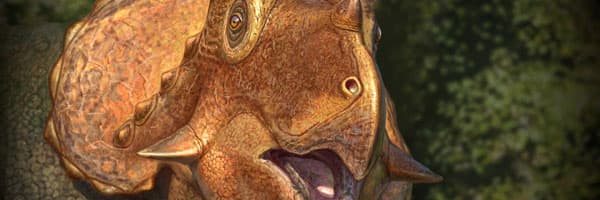
![]() Target Audience: 6th-8th Grades
Target Audience: 6th-8th Grades

Paleontologists, including a leading expert in horned dinosaurs, lead students through this phenomenon-based investigation to understand the evolutionary pathway that lead to Triceratops. Students will study the fossil record and use a suite of interactives to evaluate shared traits, phylogenetic trees, and deep time maps to build an evidence base to help them answer their research question. Along the way, they'll earn a virtual field tool kit and a NHMU Junior Paleontologist certificate.
![]() It’s free!
It’s free!
![]() Full access to all investigations and their activities.
Full access to all investigations and their activities.
![]() Instructional Guides, Research Assistant Notebooks, and more for each investigation.
Instructional Guides, Research Assistant Notebooks, and more for each investigation.
![]() Assessment rubrics for student learning
Assessment rubrics for student learning